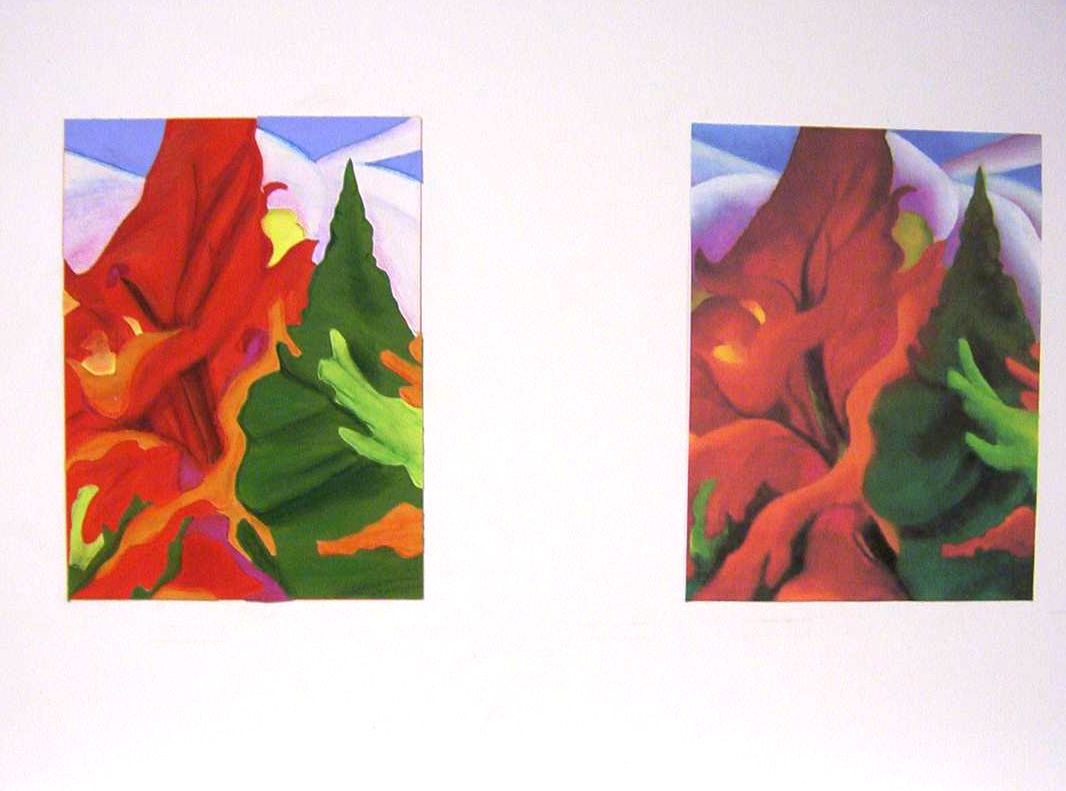Color, Lighting and Acoustics
This course is a fundamental course that investigates the properties and principles of basic color theory and its interrelationship with lighting. The focus is on the psychological and physiological effects of color and lighting as it applies to the form, texture, and finish of interior spaces. Course content provides a basic understanding of lighting calculations, types of lamps, appropriate use and application. General acoustic principles with an exploration of material application are introduced.
At the end of the course, the student will be able to:
At the end of the course, the student will be able to:
- Understand color theory and explore these concepts in exercises
- Demonstrate a working knowledge of applying color to materials, finishes and interior architecture.
- Assign color and lighting combination to enhance the interior experience, or mood, while satisfying functional requirements for the design conditions.
- Select interior lighting based on color rendition, fixture type and aesthetic style.
- Understand the basics of acoustic design for the interior environment and be able to select products to create appropriate auditory conditions.
Color Studies
These quick studies of two dimensional color interactions began with the students designing a complex pattern, one that could be used in creating textiles. Next, using the color wheel students created a color scheme that had at least three colors. Using color aid paper and the Benjamin Moore color samples the students created their pattern deciding where and how color should be applied to make the pattern realized. Next they recreated three more patterns reducing the value of the hues. The objective was to have each of the four patterns read as individual pieces yet refer to the same color palette. The students then presented their projects discussing how "mood" was created by changes in saturation.
Recreate a Masterpiece
The goal of this color project was to cultivate a finer eye for color by studying the color interaction in a selection of fine art. Using color aid paper, paint samples, graphite and color pencils students were charged with creating an identical replica of their selected masterpiece.
Acoustic Design: Theater Room
In this exercise students created a design for the theater room of Peet Residence Hall to compliment the new design scheme in the public areas.The room's intended use is as a theater for dorm residents and as a classroom/presentation space for the Architecture Living Learning Community (LLC). The task for the students included designing a room with finishes that will enhance sound quality and create a positive acoustic experience. As always, creating an interesting and rich interior environment was paramount. This was a student competition and the "awarded" project developed for implementation.
Student Designer: Stephanie Cook
Student Designer: Stephanie Cook
Light Fixture Design
This exercise offered students a hands-on opportunity to apply principles of lighting theory presented in lecture. By designing and constructing a light fixture students explored how form, aperture and lamp types create lighting effects.
Student Samples:
Student Samples:
Luxury Day Spa
With the hectic pace of life people are looking for places that provide healing experiences to replenish, rejuvenate and restore their sense of well-being. Consumers are increasingly seeking the luxury and relaxation of the spa experience as an alternative or complement to other therapies and leisure activities. Day spas have become one of the fastest growing businesses in the United States because they offer a local, affordable range of services.
Over the course of the F 2011 and F 2012 semester students used the day spa model as the main design problem to explore color, lighting and acoustics. Precedence research was conducted by the students who prepared both a written summary and visual presentation of their findings. Students toured two day spas in Rochester, New York and interviewed the Spa Managers. A mood board was created to express the aesthetic of their own spa and serve as a basis for design. Project development was based on studio lecture and lab exercises. Sub-assignments were treated as benchmarks in the semester and were based on the following criteria:
Floor Plan design with consideration of public and private adjacency for acoustic control
Exploration of code with respect to egress and ADA accessibility
Reflected Ceiling Plan and Lighting Design
Acoustic ceiling materials, lighting fixture selection with dimensioned spacing, switch plan, lighting diagrams and specifications
Color Palette
(3) ceiling finishes; (5) wall finishes; (3) floor finishes
Furniture, fabrics and accessories
Over the course of the F 2011 and F 2012 semester students used the day spa model as the main design problem to explore color, lighting and acoustics. Precedence research was conducted by the students who prepared both a written summary and visual presentation of their findings. Students toured two day spas in Rochester, New York and interviewed the Spa Managers. A mood board was created to express the aesthetic of their own spa and serve as a basis for design. Project development was based on studio lecture and lab exercises. Sub-assignments were treated as benchmarks in the semester and were based on the following criteria:
Floor Plan design with consideration of public and private adjacency for acoustic control
Exploration of code with respect to egress and ADA accessibility
Reflected Ceiling Plan and Lighting Design
Acoustic ceiling materials, lighting fixture selection with dimensioned spacing, switch plan, lighting diagrams and specifications
Color Palette
(3) ceiling finishes; (5) wall finishes; (3) floor finishes
Furniture, fabrics and accessories
























